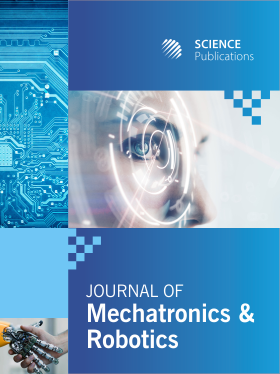Face Recognition as a Biometric Application
- 1 Bucharest Polytechnic University, Romania
Abstract
A facial recognition system is a technology capable of identifying or verifying a person from a digital image or a video frame from a video source. There are multiple methods in which facial recognition systems work, but in general, they work by comparing selected facial features from the given image with faces within a database. It is also described as a Biometric Artificial Intelligence-based application that can uniquely identify a person by analyzing patterns based on the person's facial textures and shape. While initially a form of computer application, it has seen wider uses in recent times on mobile platforms and in other forms of technology, such as robotics. It is typically used as access control in security systems and can be compared to other biometrics such as fingerprint or eye iris recognition systems. Although the accuracy of facial recognition system as biometric technology is lower than iris recognition and fingerprint recognition, it is widely adopted due to its contactless and non-invasive process. Recently, it has also become popular as a commercial identification and marketing tool. Other applications include advanced human-computer interaction, video surveillance, automatic indexing of images and video database, among others. The use of facial recognition has recently become a very debatable subject and has been criticized more and more because it was considered an unethical tool used to spy on the public. The reason for such criticism is, however, largely due to the lack of information and regulation of this technology. Used proportionally and responsibly, facial recognition can and should be beneficial. It has the capacity to do much more to increase security in the future-from street crime to airport security. Armed war crime has dominated UK titles throughout the year. Recent statistics indicate that the number of people who benefited from the emergency assistance due to armed attacks increased by almost 40% compared to the two years ago, while the number of children under 18 years of age with stab wounds is increasing by 86 % in only four years. Face recognition has become a normal activity in many airports around the world. Many people today have a so-called biometric passport that allows them to go faster to the gate without having to be controlled. The facial recognition used in this way has significantly reduced waiting times for passport control but also has the ability to increase security in and around airports. Face recognition thus allows officers to identify an individual more quickly and accurately than the human eye. While some critics may worry about technology-related confidentiality issues, airports have shown that the use of facial recognition has improved security as well as speeding up processes such as check-in and in the future, even procedures boarding. When used correctly and proportionally, facial recognition can help protect the public and improve national security on multiple fronts. Similarly, advanced technology can recognize a person seen on CCTV security systems at the crime scene, justifying a person's stop and search. The ability to check in real time whether a person is on the list of criminal investigations adds an added advantage to the decision-making process before stopping and searching, thus lowering the probability of discrimination.
DOI: https://doi.org/10.3844/jmrsp.2019.237.257

- 11,436 Views
- 4,539 Downloads
- 34 Citations
Download
Keywords
- Biometrics
- Robots
- Mechatronic Systems
- Facial Recognition
- Facial Recognition System
- IDENTIFYING a Person
